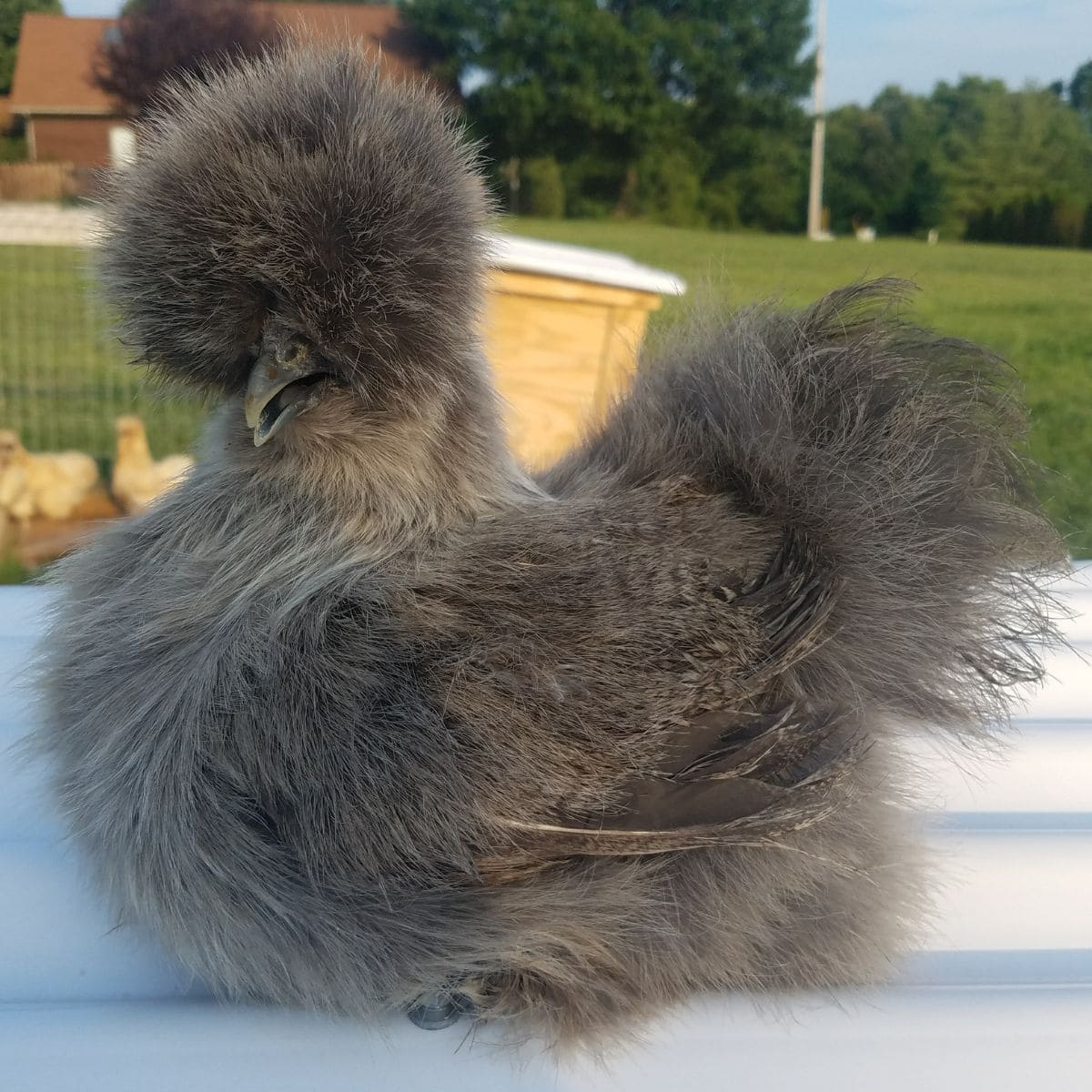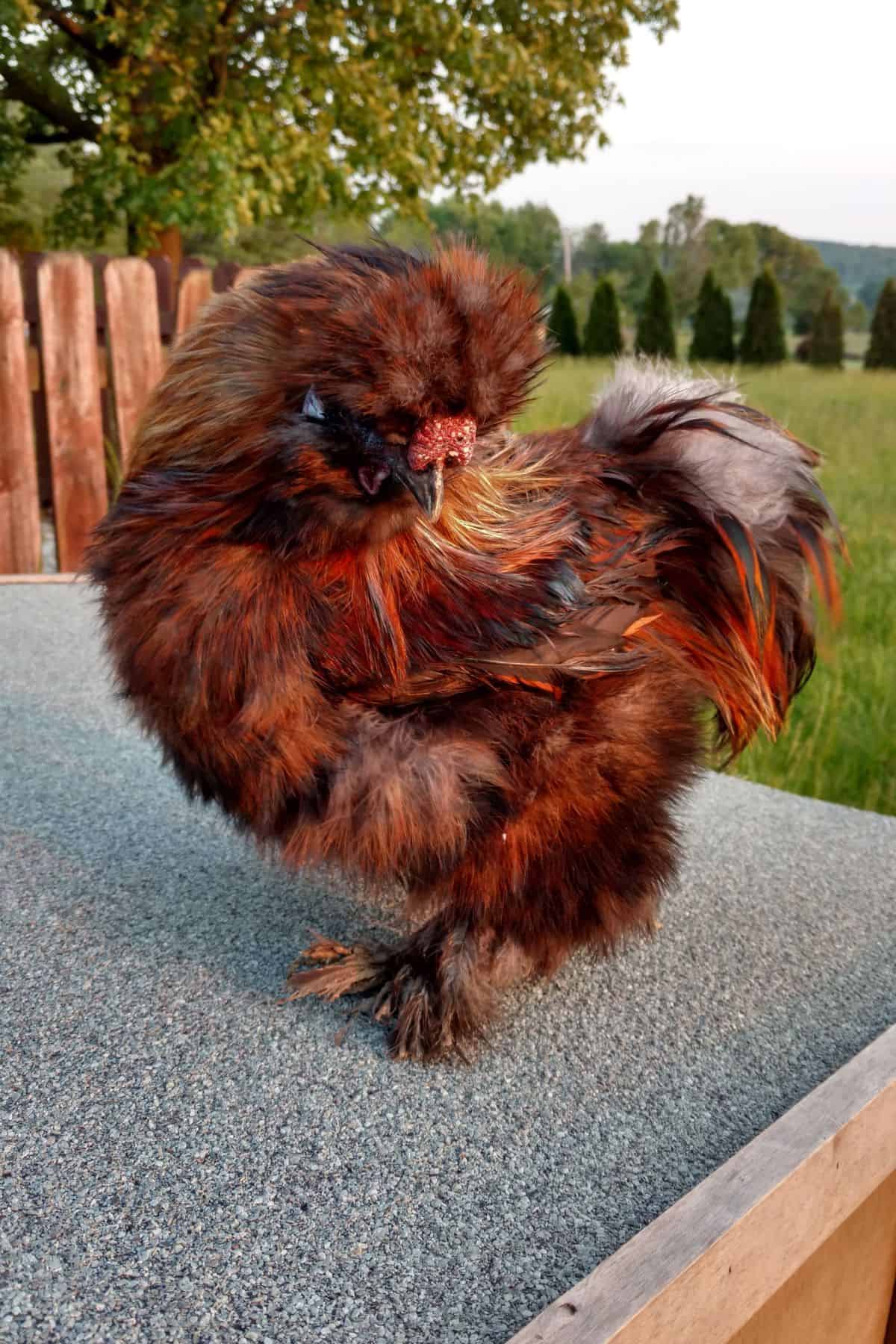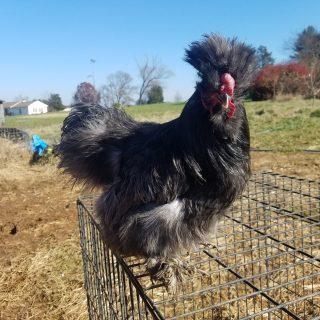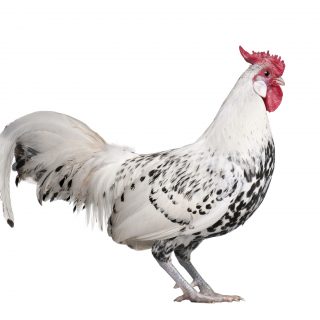If you are looking for a unique type of chicken to add to your flock, or perhaps you're a little low on coop space then you should consider one of the bantam chicken breeds. Bantam chickens are a group of chicken breeds that are significantly smaller than regular or large breed chickens. Some might call them miniature chickens.
So, let's dive in to all things bantams including breeds, care and why you should get some for your flock.

Jump to:
What are Bantam Chickens?
Bantam chickens are not a single breed of chicken, but rather a group of chicken breeds where they are usually about ½ to ⅓ the size of regular, large breed chickens. They come in three variations: True, Made/Developed and Miniaturized.
Their small size means that they typically don't weigh more than about 2.5 - 3 pounds. And some are as tiny as 1 pound in size.
There is an official American Bantam Association which lists about 70 breeds (with additional color variations under each breed) which are recognized by their organization. The ABA sets forth breeds standards and organizes shows for bantams.
Types of Bantams
There are three types of bantams, as mentioned above. They are True, Made or Miniaturized and Developed.
Though, the Developed category can have crossover with the other two, so the two main classifications are True or Made/Miniaturized.
A true bantam is a chicken breed that is only a bantam breed. They have no standard sized counterpart. Some breed examples include: Silkies, Campine and Seabright.
A made or miniaturized bantam is where a normally large chicken breed has been purposely bred smaller over time to create a miniature version. This version will keep all of the characteristics that their large breed version have, just in a smaller package. Some bred examples include: Ameraucana, Cochin and Polish.
Developed bantams are essentially a bantam breed that has questionable origins or that has had further selective breeding done to an existing bantam breed. A breed example is the Japanese bantam.
Why Bantam Chickens - Pros & Cons
Besides that fact that miniature chickens are just plain 'ol adorable, bantams can be a good choice for flocks for a multitude of different reasons. Their tiny size also means there are some disadvantages to owning this breed.
Pros
- Space Constraints - if you have limited space, you may want to consider bantams chickens. Since they are generally ½ - ⅓ the size of standard breeds you can house at least two bantams in the same space that you would need for one standard breed.
- Feed Savings - they will consume less feed. This means that the cost to feed these chickens is a lot less than their full sized counterparts. If you ferment their feed, they will consume even less!
- Show & Pets - there is an entire club dedicated to shows just for bantam chickens. Additionally, they make good pets due to their small size. They are easier to handle and can be carried around and transported easily.
Cons
- Smaller Eggs - they do lay smaller eggs than large breed chickens, but can still be good layers. They will usually lay an egg that is the same percentage smaller in size as they are.
- Predators - their small size makes them easier for predators like hawks and raccoons to pick them up and take them away. So, you do have to make sure you have a thoroughly predator proofed coop and run.
- Mixed sized flocks - if you also have standard sized chickens, you may need to either house your bantams separately or be very careful when introducing new chickens to your flock. Their small size makes them vulnerable to the typical pecking that happens between chickens.
Really, bantam chickens are good for all the same things that all backyard chickens are. They just do it on a smaller scale.
If you need more help with taking care of your chickens, check out The Organized Chicken Keeper for a complete system for managing their health through keeping their supplies stocked and coop clean.
Care
While the basics of care for bantams are the same care as standard chickens. They need a chicken coop and chicken run. They need good chicken feed and clean water everyday.
They will need a few different considerations due to their size.
Since they are smaller, they may need some adjustments to things in the coop. The roosts are a good example. If your roosts are a bit of a high jump, they may not be willing or able to jump up on them and you may want to provide a shorter roost for your bantams. In our experience, some bantam breeds prefer to sleep in a pile together on the coop floor.
They will be easier prey for predators. Being small, some predators will look at them as an easier snack that larger breed chickens. And smaller predators will be more easily able to take them since they are also smaller. Due to this, you will want to ensure that you have a predator proof chicken run, a secure coop and/or possibly a livestock guard dog (like a Karakachan) to help protect them.
Lastly, due to their size, you want to be sure they are able to stay warm in the winter. This will entail making sure they have buddies to snuggle with and a good, draft free coop.
Breeds
There are so many different chicken breeds that also come in bantam size. The ABA lists about 70 breeds with multiple color variations within those breeds.
The following list is by no means all encompassing, but here are a few bantam chickens.
| Breed Name | Type of Bantam |
| Ameraucana | Made |
| Andalusian | Made |
| Australorp | Made |
| Barnvelder | Made |
| Belgiun D'uccle | True |
| Campine | True |
| Cochin | Made |
| Houdan Chicken | Made |
| Nankin | True |
| Orpington | Made |
| Polish Chicken | Made |
| Rhode Island Red | Made |
| Sebright | True |
| Serama | True |
| Silkie | True |
1. Silkies
Silkie chickens are one of the most popular bantam chicken breeds, and our personal favorite. Unlike most bantam chickens, instead of your typical chicken feathers, Silkie feathers are more like fluff. Frizzle Silkie chickens look even crazier!

We may be a bit biased since we specialize in raising them. However, Silkies come in many different colors and patterns. They also have very domesticated personalities.
Our Silkies get excited to see us just like our dogs!
2. Bantam Easter Eggers
Bantam chicken Easter Eggers, just like their larger counterparts, lay multicolored eggs!
3. Seramas
Seramas are the smallest of all bantam chicken breeds. They stand out due to their upright stance, often compared to toy soldiers.
4. Bantam Orpingtons
Orpingtons come in a variety of different colors and are typically known as a large bodied bird. However, they are also bred down to bantam chicken sizes.
5. Sebrights
Sebrights were bred to be ornamental bantam chickens and are characterized by their black wing lacing.
6. Cochins
Just like the larger Cochin chicken breed. Bantam Cochins are known for having plumage along their legs and feet.
Bantam Chicken FAQs
Yes, bantam chickens can be great layers. Of course, the amount of eggs will vary based on the specific breed. The eggs will be smaller than standard size breed eggs.
Yes, bantam chickens due to their small size can fly pretty decently. You're not going to see them flying around the sky like a cardinal or anything, but they can fly a little at a time.
The Serama or Malaysian Serama is the smallest bantam. They typically weigh under one pound.
Conclusion
As you can see, there are so many chicken breeds that are available in a much smaller size. They can be the perfect addition to a flock that has space constraints and that is looking to add pets or show chickens.
If you need more help with taking care of your chickens, check out The Organized Chicken Keeper for a complete system for managing their health through keeping their supplies stocked and coop clean.



Carol says
I have two bantam chicks that look just like my black Australorp. Could they be their mini twins?
MrAnimal Farm says
could be Australorp mixed with a bantam breed potentially 🙂
MrAnimal Farm says
Maybe they are an Australorp crossed with a bantam breed?